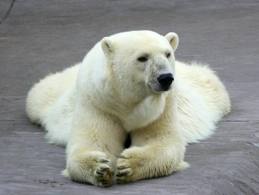There were five of them - four men and a woman.
 |
| Ada Blackjack: liked the cold |
They had volunteered for one of the strangest missions in the history of colonisation.
They were to build new lives on icy Wrangel Island to the far north of Siberia. Their goal was to prove that this inhospitable land was in fact habitable.
This 1921 colonial experiment was the brainchild of Arctic explorer Vilhjalmur Stefansson. And it was to go hopelessly, disastrously wrong.
Among the five colonisers was a young Inuit woman named Ada Blackjack. Ada’s husband had died - leaving her destitute - and she had a child with chronic tuberculosis.
She decided to join the expedition for a year, lured by the promise of a good salary. She was officially employed as the team’s seamstress.
 |
| Wrangel Island: wrap up warm |
Ada, just 25 years of age, was an odd choice to accompany the mission. She knew nothing about hunting or trapping and had never before lived off the land. She didn’t even know how to build an igloo.
The rest of the team were hardened adventurers: three Americans named Lorne Knight, Milton Galle, and Fred Maurer, and a Canadian called Allan Crawford.
When they learned that Ada had agreed to join the expedition, they thought she would be a hindrance. They scoffed that she would never survive the harsh conditions.
 |
| Home: all the creature comforts |
Yet it was to be Ada, not they, who survived the Arctic winter, having taught herself the skills she needed to endure some of the harshest conditions in the world.
On 16 September 1921, the five would-be colonists were left on barren Wrangel Island, far to the north of Siberia.
The ostensible goal of their mission was to claim the island for Great Britain. But Stefansson also wanted to prove that the frozen north was habitable.
 |
| Stefansson: colonial dreamer |
He was so convince that the island was well-stocked with wildlife that he left the colonists with enough food for just six months. He promised to send a supply ship in the following summer: in the meantime, the five would have to fend for themselves.
The mission began well. They built a large snow house and then started to hunt. They managed to kill ten polar bears, 30 seals and many geese and ducks: they were confident that they could survive until the ship’s return.
But the promised vessel never arrived and the five faced a long cold autumn with dwindling supplies.
They soon ran short of tea and coffee, flour, beans and sugar. As autumn developed into a ferocious Arctic winter, the wild game disappeared and the five were left extremely hungry. Worse still, Lorne Knight developed a serious illness.
On 28 January, 1923, Crawford, Galle and Maurer decided to traverse the icy Chukchi Sea in order to reach the Siberian mainland: they wanted to alert people to the fact they were in desperate need of help.
 |
| Only way out: the Chuchki Sea |
The three men were never seen again: they probably froze to death.
Lorne Knight was by now so afflicted with scurvy that he could scarcely move. He was nursed by Ada until April, when he also died.
Ada was now utterly alone in this ice-bound wilderness.
She had never fired the shotgun or rifle that had been left behind. But she soon learned, killing seals, foxes and ducks. She then made stews out of the meat.
She managed to keep a fire going and she read the Bible for comfort. But as another summer slipped by, she grew weaker and weaker. She prepared for her own lingering death.
But just when she had given up hope of ever being rescued, she sighted a vessel. On 23 August, 1923, the Donaldson arrived at Wrangle Island.
The crew were expecting to find the five colonists in rude health. Instead, they stumbled upon a half-starved Ada Blackjack.
 |
| Supper |
When her story reached the outside world, the newspapers labelled her the ‘female Robinson Crusoe’. Her survival, they said, was a miracle.
Ada didn’t like the media circus. She quietly returned to her former life, using the expedition salary to take her son to Seattle in order to cure his tuberculosis.
 |
| Ada the celebrity |
But she was by now an unwitting celebrity, heralded in books and journals.
‘Her physical stomach wasn't a bit more adapted to seal oil and blubber than theirs [the men’s],’ wrote one. ‘But in Ada's heart there was a fire that isn't easily blown out.
‘If Ada ever takes it into her head that she would like to see what the North Pole looks like, she will wade up and look at the place.’
Ada never made it to the North Pole, but she did return to the Arctic and eventually made it her home.
The freezing climate seems to have suited her, for she finally died at the ripe old age of 85.
UK paperback |
NOW PUBLISHED IN PAPERBACK
And for my American readers, it is now published under the title: The Boy Who Went to War: The Story of a Reluctant German Soldier in WWII available here










